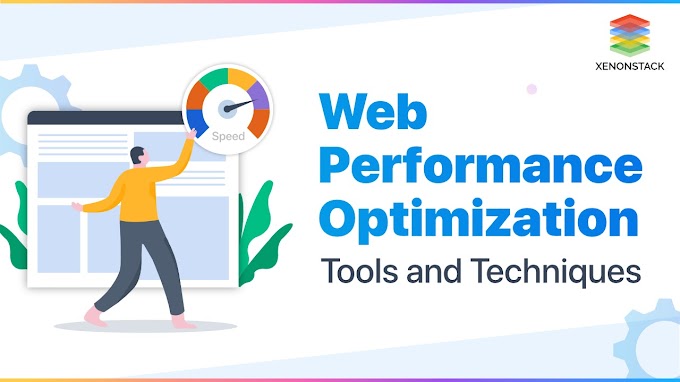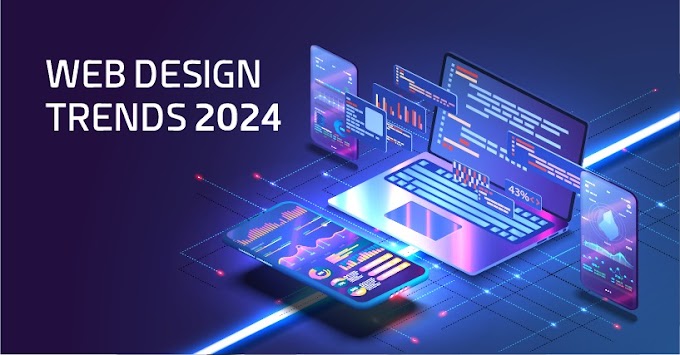Web Design Trends: What’s Hot in 2024?
Web design is an ever-evolving field, where trends shift rapidly to meet the demands of users and the capabilities of new technologies. As we move through 2024, several web design trends are making waves, shaping how businesses present themselves online and how users interact with websites. Staying updated with these trends is crucial for anyone involved in web development or digital marketing, as it helps ensure that websites remain relevant, engaging, and competitive.
In this blog, we’ll explore the hottest web design trends of 2024, focusing on the aesthetics, functionalities, and user experience improvements that are defining the digital landscape this year.
1. Dark Mode Dominance
Dark mode has been gaining popularity over the past few years, and in 2024, it’s become a staple in web design. Dark mode offers a sleek, modern look that is easy on the eyes, particularly in low-light environments. It also reduces energy consumption on OLED and AMOLED screens, making it an eco-friendly option.
Why It’s Hot:
- User Comfort: Dark mode reduces eye strain, especially for users who spend long hours on their devices.
- Aesthetic Appeal: It provides a sophisticated, minimalist look that complements a wide range of content, from text to images and videos.
- Flexibility: Dark mode can be seamlessly integrated into any website design, offering users the option to switch between light and dark themes.
Implementation Tips:
- Ensure that your color palette is carefully chosen to maintain readability and contrast in dark mode.
- Provide a toggle option for users to switch between dark and light modes based on their preference.
2. 3D Graphics and Immersive Experiences
With advancements in web technology, particularly WebGL and faster processing speeds, 3D graphics are becoming more accessible and popular in web design. In 2024, websites are increasingly using 3D elements to create immersive experiences that capture users' attention and keep them engaged.
Why It’s Hot:
- Engagement: 3D graphics make websites more interactive and visually stimulating, encouraging users to explore and interact with the content.
- Storytelling: 3D elements can help tell a brand’s story in a more compelling and immersive way.
- Innovation: It sets a website apart from the competition, showcasing a brand’s commitment to innovation and cutting-edge design.
Implementation Tips:
- Use 3D graphics sparingly to avoid slowing down the website’s performance.
- Ensure that 3D elements are mobile-responsive and do not compromise the user experience on smaller screens.
3. Minimalism with a Twist
Minimalism has been a long-standing trend in web design, but in 2024, it’s being redefined with a touch of creativity. The new wave of minimalism involves clean, uncluttered designs that focus on essential elements, enhanced by bold typography, unexpected color schemes, and subtle animations.
Why It’s Hot:
- Focus on Content: Minimalist designs direct attention to the content, ensuring that the message is clear and unambiguous.
- Faster Load Times: Simplified designs often lead to faster loading times, improving overall site performance and user satisfaction.
- Timeless Appeal: Minimalism remains relevant and visually appealing across different industries and audience demographics.
Implementation Tips:
- Experiment with bold, contrasting colors to add a dynamic edge to minimalist designs.
- Incorporate micro-animations to add subtle movement and interactivity without overwhelming the user.
4. AI-Powered Personalization
Artificial intelligence (AI) continues to revolutionize web design, particularly in the realm of personalization. In 2024, websites are increasingly leveraging AI to create personalized experiences that cater to individual user preferences, behaviors, and needs.
Why It’s Hot:
- User-Centric Design: AI allows for highly tailored content, improving user satisfaction and engagement.
- Dynamic Content: AI can analyze user data in real-time to deliver personalized recommendations, content, and product suggestions.
- Efficiency: Automated AI systems streamline processes like customer support and content delivery, enhancing overall efficiency.
Implementation Tips:
- Utilize AI-driven chatbots to offer personalized assistance and support.
- Implement AI algorithms to recommend content or products based on user behavior and preferences.
5. Micro-Interactions
Micro-interactions are small, subtle animations or responses triggered by user actions, such as clicking a button or hovering over an image. These interactions add a layer of interactivity and engagement to websites, making the user experience more enjoyable and intuitive.
Why It’s Hot:
- Enhanced Usability: Micro-interactions provide immediate feedback to users, improving navigation and overall usability.
- Delight Factor: They add a touch of delight and surprise, making the user experience more memorable.
- Guidance: Micro-interactions can guide users through a website, helping them understand how to interact with various elements.
Implementation Tips:
- Keep micro-interactions subtle and purposeful; they should enhance the experience without distracting from the content.
- Test micro-interactions on different devices and browsers to ensure they function smoothly across all platforms.
6. Neumorphism
Neumorphism, a design trend that blends skeuomorphism and flat design, is making a strong comeback in 2024. This style uses soft shadows and gradients to create a 3D effect, making elements appear as if they are extruding from or receding into the background.
Why It’s Hot:
- Visual Depth: Neumorphism adds a tactile, realistic feel to UI elements, making them more intuitive to interact with.
- Modern Aesthetic: It offers a fresh, modern look that bridges the gap between realism and simplicity.
- Consistency: Neumorphism creates a consistent visual language across different elements, enhancing the overall user experience.
Implementation Tips:
- Use neumorphism selectively, as too much can make the design feel heavy or overwhelming.
- Pair neumorphic elements with a minimalist layout to maintain balance and avoid clutter.
7. Sustainable Web Design
As environmental concerns continue to grow, sustainable web design has become a significant trend in 2024. This approach focuses on reducing the carbon footprint of websites by optimizing energy efficiency, reducing server load, and promoting eco-friendly practices.
Why It’s Hot:
- Eco-Consciousness: Users are increasingly aware of environmental issues, and sustainable web design aligns with their values.
- Performance: Sustainable practices often lead to more efficient websites, improving load times and overall performance.
- Brand Image: Companies that adopt sustainable practices can enhance their brand image and appeal to eco-conscious consumers.
Implementation Tips:
- Optimize images, code, and hosting to reduce energy consumption.
- Consider green hosting providers that use renewable energy to power their servers.
8. Voice User Interface (VUI)
With the rise of smart speakers and voice-activated devices, Voice User Interfaces (VUIs) are becoming more prominent in web design. In 2024, more websites are incorporating voice search and voice-activated navigation, offering users an alternative way to interact with digital content.
Why It’s Hot:
- Accessibility: VUIs make websites more accessible to users with disabilities or those who prefer voice interaction.
- Convenience: Voice commands offer a hands-free, efficient way to navigate websites, particularly on mobile devices.
- Innovation: Incorporating VUI positions a brand as forward-thinking and innovative, appealing to tech-savvy users.
Implementation Tips:
- Ensure that voice commands are intuitive and easy to use, with clear instructions for users.
- Optimize content for voice search by focusing on natural language and long-tail keywords.
9. Advanced Scrolling Techniques
Scrolling has evolved beyond a simple way to navigate content. In 2024, advanced scrolling techniques like parallax scrolling, infinite scrolling, and horizontal scrolling are being used to create dynamic, engaging experiences that guide users through a website’s content.
Why It’s Hot:
- Interactivity: Advanced scrolling techniques create a more interactive and immersive user experience.
- Storytelling: These techniques can be used to craft compelling narratives, leading users through a story as they scroll.
- Visual Appeal: Scrolling effects add depth and dimension to websites, making them visually striking.
Implementation Tips:
- Use advanced scrolling techniques to enhance, not overshadow, the content. The experience should remain user-centric.
- Test scrolling effects on various devices to ensure smooth performance across all platforms.
Conclusion
The web design landscape in 2024 is defined by a blend of aesthetic innovation, user-centric functionality, and technological advancements. As these trends continue to shape the digital world, staying ahead of the curve is essential for businesses and designers alike. By embracing trends like dark mode, 3D graphics, AI-powered personalization, and sustainable web design, you can create websites that are not only visually stunning but also efficient, accessible, and aligned with the latest user expectations.
Remember, while trends can guide your design decisions, it’s important to stay true to your brand’s identity and the needs of your audience. The best web designs are those that seamlessly combine cutting-edge trends with timeless principles, resulting in a user experience that is both innovative and enduring.





0 Comments